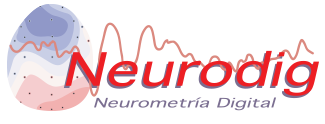5th European Congress on Epileptology
Coherence analysis of EGC whit out stimulation in autistic children shows abnormalities that suggest abnormal communications between regions
5th European Congress on Epileptology
October 6th-10th, 2002 Madrid , España
S. Cruz, L.C. Aguila, P. Rosique, A. Islas2.
1) Instituto de Investigaciones en Neuroplasticidad y Desarrollo Celualr (IINEDEC), Guadalajara, Jalisco, MillaCO. 2) Departamento de Biología Celualr y Molecular. Universidad de Guadalajara Guadalajara, Jalisco, Mexico.
Purpose:
With the purpose of analysing the quality of communication among cortical regions in autistic children (AC), an EEG study was performed.
Method:
An analysis of coherence was developed for a group of n=45, both sexes, ages from 3 to 8 years Every individual case was compared to that of a healthy control group n=22, sex and age matched through Z transform. The analysed regions were: 01, 02, PZ, P3, P4, P7, P8, referred to OZ; 01, 02, P3, P4, P7, PS, CZ, referred to PZ; F7, FPl, F3, C3, P3, P7, referred to T7; FS, FP2, F4, C4, P4, P8, referred to T8; FPl, FP2, F3, F4, C3, C4, referred to FZ. The average of each and every band was compared to the control group through Z transform and deviations of p<0.O5 were considered significant.
Results:
Fifty three percent of the cases showed significant deviations on 01, 43% on 02, 20% on PZ, 33% on P3, 20% on P4, 43% on P7, and 30% on P8 all referred to OZ; 43% on O1, 23% on O2, 26% on P3, 10% on P4, 50% on P7, 33% on PS, 13% on CZ al1 referred to PZ; 43% on F7, 43% on F3, 26% on C3, 43% on P7, 36% on P3, 36% on FP1, all referred to T7; 23% on F8, 50% on F4, 26% on C4, 43% on P4, 26% on P8, and 40% on FP2, all referred to T8. When FZ was the reference, only one patient showed deviations on C3 and C4. Many cases showed significant excess in some areas and very low levels in other, suggesting abnormal distribution of pathways or synapses inferring excessive communication between some areas and very low between some others.
Conclusion:
We conclude that in autistic children, the communication between cortical regions is often altered, suggesting abnormalities in the mechanisms that regulate the formation of neural networks.
Cherece analysis of eeg in autistic children showed improvement after fgf2 treatment, which suggests remodeling a cortical communication.
5th European Congress on Epileptology
October 6th-10th, 2002 Madrid , España
A.,Luís, L.C. Aguilar, S. Cruz, P. Rosique, M. Aceves, A. Islas.
1) Instituto de Investigaciones en Neuroplasticidad y Desarrollo Celuar (IINEDEC), Guadalajara, Jalisco, México. 2) Departamento de biologia Celular y Molecular. Universidad de Guadalajara, Jalisco, México.
Purpose:
Previous studies performed for our group showed significant improvement in autistic children in mental development and evoked potentials when they were treated with FGF2 ( Aguilar, Et. al.. Proc. the 16th Int Evoked Pot., Sym. Japan . 1995.ELSEVIER. Aguilar Al., Cambridge Hea1thtech Inst, 2nd Ann., Symp., Pittsburgh , 1999). In this work we analysed the changes in coherence analysis of G in autistic patients in order to find whether the children improved their parameters after FGF2 treatment
Method:
EEG in autistic patients (3-8 years 0111, both sexes) n=15 treated with FGF2 0.2 µg every 10 days for 6 months by subcutaneous route, a control matched group (in sex, age and n) received saline solution as a placebo. The analysed regions were: O1, O2, PZ, P3, P4, P7, PS, referred to OZ; 01, 02, P3, P4, P7, PS, CZ, referred to PZ; F7, FPl, F3, C3, P3, P7, referred to TI; F8, FP2, F4, C4, P4, PS, referred to T8; FPl, FP2, F3, F4, C3, C4, referred to FZ. The average of each and every band was compared to the control group through Z transform and deviations of p<O.05 were considered significant.
